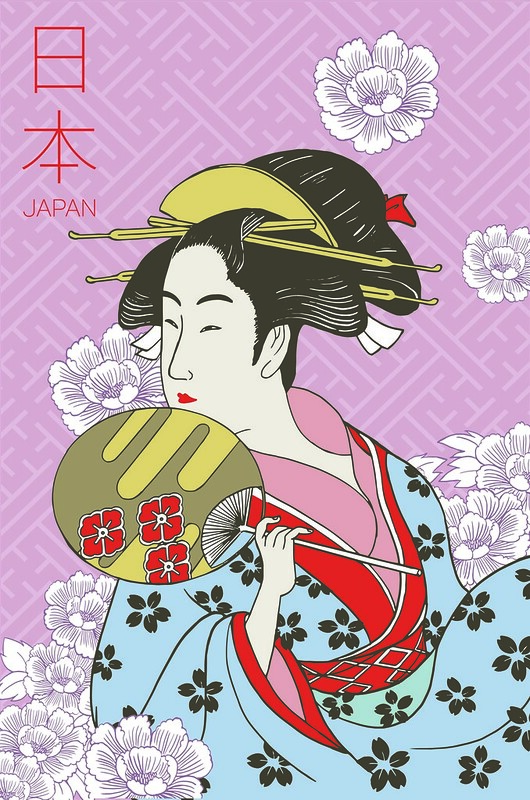
The Allure of the Japanese Geisha
A geisha, also called geiko or geiji, is a traditional Japanese female entertainer trained in various arts such as dancing, classical music, singing, tea ceremony, and calligraphy. A geisha starts out as an apprentice called a maiko or “dance child.” Geishas have a distinct appearance with their shimada hairstyle, pale make-up, and elegant kimonos.
History
In the latter part of the 600s, serving girls (or saburuku) who had a better education entertained the well-to-do at social gatherings. When the Imperial Court moved to Kyoto in 1794, the Japanese geisha culture truly developed as an elite community that specialized in entertainment.
Contrary to popular belief, geishas were not courtesans or prostitutes, although they sometimes worked alongside them during the Edo period as geishas entertained affluent customers with song and dance.
Geisha with a shamisen, 1870s
Popularity began to decline during WWII when Japanese women had to work for their country. The geisha reputation also took a blow when American servicemen went home with stories of bawdy “geishas” who were actually simply regular Japanese women or prostitutes.
Although geishas are no longer as abundant as before, they are still famous for preserving the traditional Japanese forms of entertainment.
Maiko in kimono.
Apprenticeship
It takes about 5 years of training to attain geisha status. When a maiko turns 21, she becomes a full geisha upon initiation in the geisha community. Apprenticeship starts as early as age 15 in Kyoto and 19 in Tokyo. In the olden times, young girls started training as early as 3 to 5 years old.
Currently, most geishas can be found only in Kyoto and Tokyo where they still have hanamachi, or geisha districts. Caucasian geishas debuted in 2007 in the Asakusa district, and are known as sayuki.
Miyako Odori
The Miyako Odori, or “Cherry Blossom Dance”, is performed by the geisha of Gion Kōbu. It was first performed in 1872 as a way of promoting prosperity in Kyoto. It is now a main event held in Kyoto every April—cherry blossom season.


